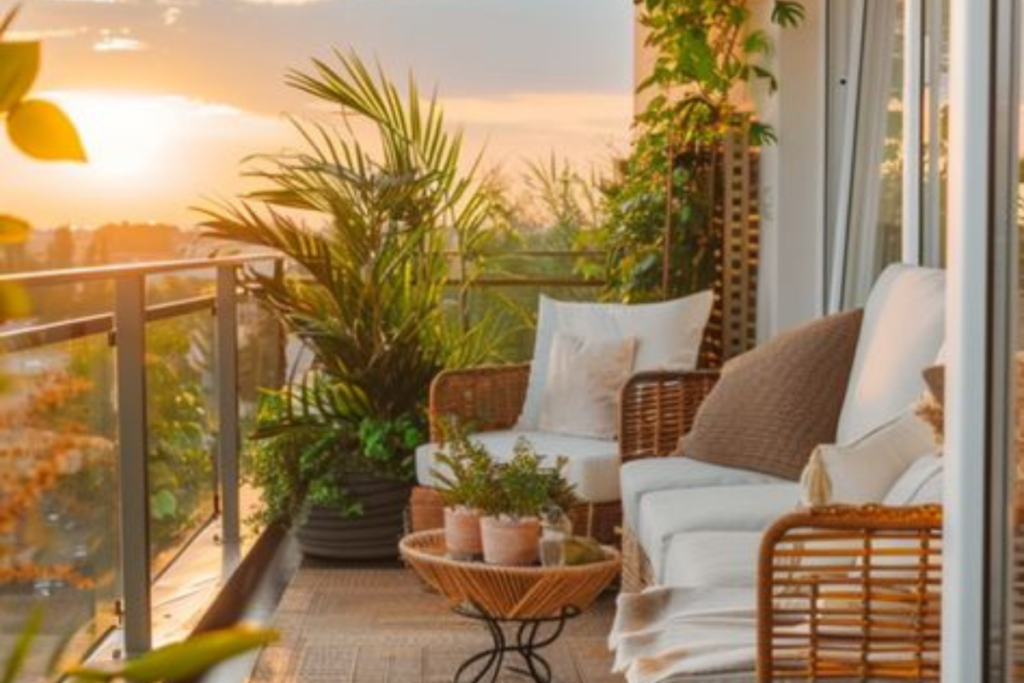A balcony can be an underutilized space in many homes, but with a little creativity and effort, it can become a lush sanctuary. Growing plants on your balcony not only enhances the beauty of your home but also promotes relaxation. Here’s how to create your own DIY plant balcony garden.
1. Assess Your Space
Before choosing your plants, evaluate your balcony’s exposure to sunlight.

- Sunny Balconies: If your balcony gets plenty of direct sunlight, consider growing sun-loving plants like tomatoes, peppers, herbs (basil, rosemary, thyme), or even small fruit trees.
- Shaded Balconies: If your balcony is shaded most of the day, opt for plants that thrive in low light, such as ferns, hostas, and certain varieties of lettuce.
2. Container Gardening
Since most balconies don’t have ground soil for planting, container gardening is the way to go.
- Choosing Containers: Pick containers that have proper drainage holes. Terracotta pots, wooden planters, and hanging baskets are great options.
- Grouping Plants: For a cohesive look, group plants with similar care requirements together. Consider mixing plants of varying heights to add dimension.
3. Vertical Gardening
Maximize your balcony space by going vertical.
- Trellis Systems: Install trellises on the walls or use freestanding trellis frames to grow climbing plants like peas, beans, or flowering vines like morning glories.
- Wall Planters: Use wall-mounted planters or hanging pots to grow plants in a vertical fashion. These planters are perfect for herbs, trailing plants, or small flowers.
4. Soil and Fertilization
Use a high-quality potting mix for all your containers to ensure proper drainage and root growth. Fertilize your plants regularly with an all-purpose organic fertilizer, but be mindful not to overfeed them.
5. Watering System
Balconies tend to get hot, especially in the summer, so it’s important to water your plants properly.
- Self-Watering Containers: Consider using self-watering planters that can help regulate the moisture levels for your plants.
- Drip Irrigation: If you have many plants, a drip irrigation system is an excellent DIY option to ensure consistent watering.
6. Seasonal Considerations
Remember that different seasons may affect the type of plants you can grow. In the summer, focus on heat-tolerant plants, and in the winter, opt for cold-hardy plants like kale, cabbage, or ornamental grasses.
